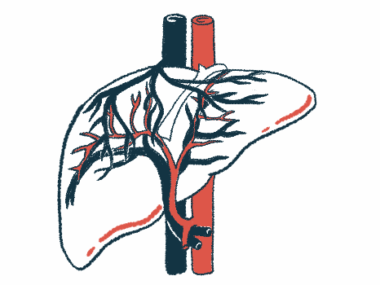Abnormal amino acid profile seen in biliary atresia infants after birth
Findings support idea that the disease may develop prenatally
Written by |

The blood levels of four amino acids, the building blocks of proteins, are significantly elevated in infants with biliary atresia within 72 hours of birth compared with healthy infants, a study in Germany shows.
Research has shown an altered amino acid profile in older biliary atresia patients, but this study provides evidence that such alterations are present shortly after birth, before the appearance of symptoms, the researchers said.
The findings support the idea that biliary atresia may develop prenatally, or before birth, instead of after birth due to a triggering factor, which underscores “both the need and the possibility for a reliable newborn screening for BA [biliary atresia],” the researchers wrote.
The study, “Infants with biliary atresia exhibit an altered amino acid profile in their newborn screening,” was published in Metabolomics.
Biliary atresia is a rare liver condition in infants wherein certain bile ducts are obstructed or absent. This slows the flow of the digestive fluid bile through the ducts from the liver to the intestines, called cholestasis, which promotes bile accumulation in the liver, damaging and scarring the organ, and disrupting its function. Biliary atresia symptoms typically arise some weeks after birth and include pale stools, dark urine, and jaundice, or yellowing of the skin and whites of the eyes.
The Kasai procedure, which involves creating a new tube to carry bile into the intestines, is the first-line treatment. About half of biliary atresia patients still have progressive liver scarring that leads to liver failure, making a liver transplant the only effective treatment option. For this reason, “early diagnosis is therefore essential in order to provide timely surgery,” the researchers wrote.
Does biliary atresia develop prenatally?
Some researchers believe the disease is triggered by an infection or toxin after birth, but evidence points to prenatal development, meaning infants may already show disease-specific alterations that could be used to improve an early diagnosis.
“Newborns in Germany are routinely screened for rare metabolic diseases using dried blood spot (DBS) cards within 36-72 [hours] after birth,” the researchers wrote. DBS is a form of sampling that starts with a finger or heel prick, followed by spotting and drying blood samples on filter paper.
Biliary atresia isn’t routinely assessed in newborn screening (NBS) due to a lack of known disease-specific metabolites, which are molecules produced in or by biological processes.
Amino acids are essential metabolites, however, and “liver damage is known to cause amino acid imbalances,” wrote the researchers, who noted previous studies showed abnormal amino acid patterns in infants with biliary atresia as early as a mean age of 40 days.
Analyzing amino acid profile in biliary atresia
To learn if the alterations are present at the time of NBS, researchers in Germany retrospectively analyzed the amino acid profile in DBS cards collected within 72 hours after birth of 41 infants (34% males) who were later diagnosed with biliary atresia and 40 sex-matched healthy infants.
All the biliary atresia infants had been referred for a Kasai procedure between March 2016 and February 2021. Fourteen infants had new DBS samples collected at the time of the surgery, at a mean age of 57 days. More than a third (36%) had a liver transplant at a mean of about 1.5 years after the Kasai procedure and 48% of them had maintained their liver at the last follow-up.
The blood levels of four amino acids — methionine, arginine, histidine, and threonine — were significantly higher in infants with biliary atresia than healthy controls, and the levels of the first three showed a significant increase between NBS and the Kasai sampling.
The results do need to be confirmed as the NBS samples had been stored longer at room temperature, which can reduce detectable amino acids.
There were no significant associations between patients’ amino acid profiles and clinical parameters, including levels of bilirubin (a liver damage marker), age at the time of the Kasai procedure, and liver scarring severity. Amino acid profiles were also not significantly linked to clinical outcomes, including jaundice-free liver survival, liver transplant, or death.
“Our NBS-DBS analysis showed that BA infants exhibit distinct amino acid profiles within 72 [hours] after birth compared to healthy newborns as an early sign of impaired liver function, supporting the theory of a prenatal onset of the disease,” the researchers wrote, noting the findings showcase the “need for an appropriate screening parameter in order to improve the clinical outcome of patients through early diagnosis and treatment.”
Larger studies can confirm the findings and help “improve the understanding of [disease] processes in [biliary atresia],” they wrote.







